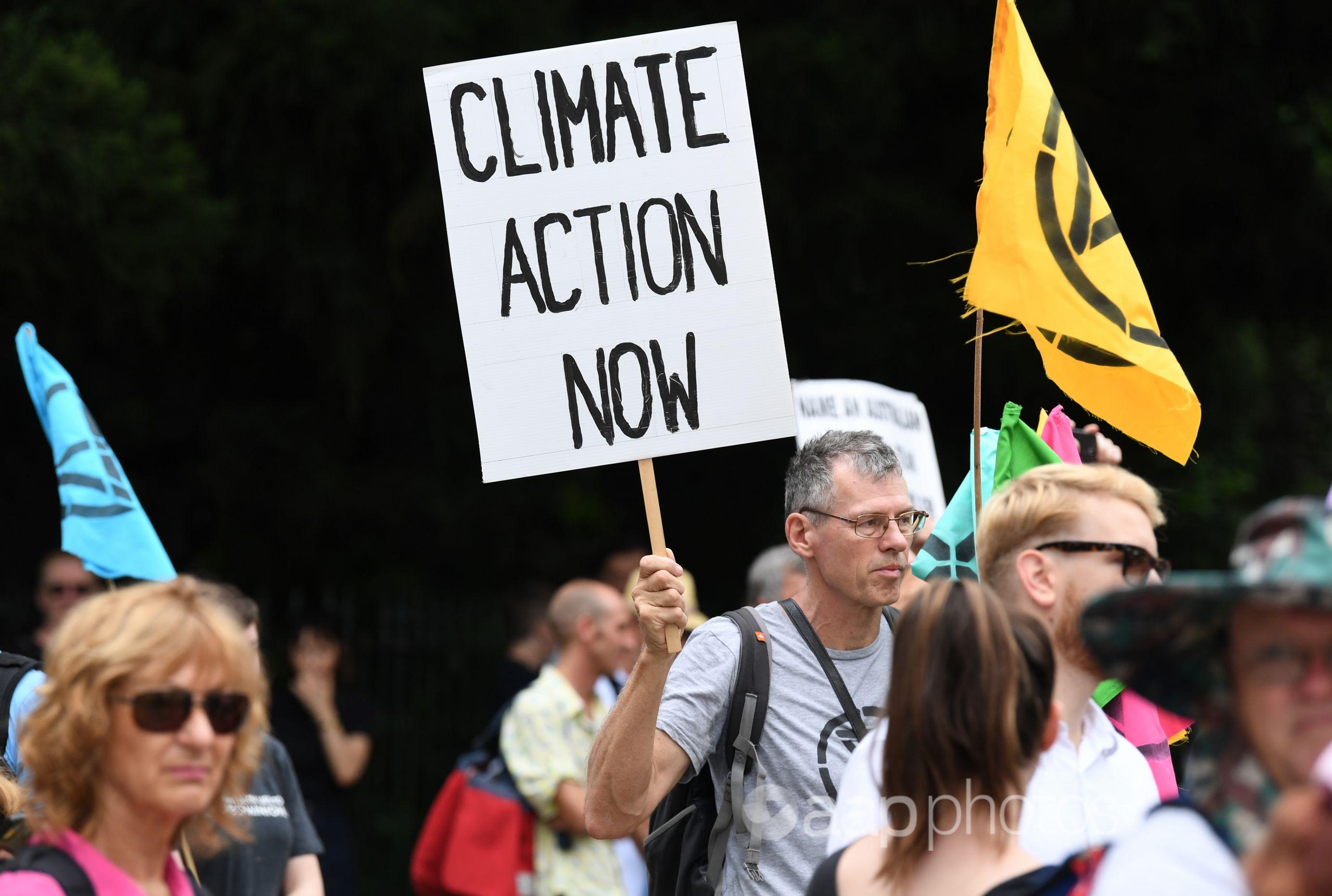The Statement
“We met Kyoto 1, we will comfortably smash Kyoto 2 and I believe we will meet (in) 2030 our targets there which we have set … The thing about Australia and our commitments on emissions reductions is we actually make them and achieve them.”
Prime Minister Scott Morrison discussing Australia’s carbon emissions reduction targets. January 22, 2019
The Analysis
Prime Minister Scott Morrison says Australia has met, and will continue to meet, carbon emissions reduction targets identified within the United Nations Framework Convention on Climate Change (UNFCCC).
AAP FactCheck examined the veracity of Mr Morrison’s claim Australia hit its first Kyoto protocol target, is on track to meet its second Kyoto target, and will also achieve its Paris Agreement emissions reductions goals for 2030.
The Kyoto Protocol gives effect to the UNFCCC objective of reducing human-induced greenhouse gases (GHGs) in an effort to address climate change.
As a signatory to the Kyoto Protocol, Australia committed to limiting increases in net annual GHG emissions to 108 per cent of its 1990 levels by 2008 to 2012. The National Inventory Report 2012 shows Australia surpassed its first Kyoto target, with emissions averaging 565 metric tonnes of carbon dioxide equivalent per year (Mt CO2-e) , or 103 per cent of the 1990 base level.
Australia also committed to reducing its net annual GHG emissions to 99.5 per cent of 1990 levels for the Kyoto Protocol’s second commitment period (2013–20). This is consistent with Australia’s stated 2020 target to reduce emissions by 5 per cent below 2000 levels.
Australia’s Emissions Projections 2018 report, released by the Department of the Environment and Energy on December 21, 2018 [4], showed Australia is on track to “overachieve on its 2020 target” by 367 Mt CO2-e inclusive of carry-over, or 240 Mt CO2-e without carryover.
Carryover refers (page six) to surplus emission units ‘carried over’ from a prior Kyoto Protocol commitment period and used in the next period.[5]
Australia’s 2030 emissions reduction target, set out in the UNFCCC Paris Agreement which takes effect in 2020, is to reduce net annual emissions to 26–28 per cent below 2005 levels.
This represents a cumulative emissions reduction of between 695-762 Mt CO2-e between 2021 and 2030.
“Total emissions in 2030 are projected to be 563 Mt CO2-e, which is seven per cent below 2005 levels (605 Mt CO2-e),” Australia’s Emissions Projections 2018 report stated (on page 10).
“Emissions to 2030 are projected to grow four per cent above 2020 levels, driven by higher emissions from LNG production, increased transport activity, a declining forest sink … and growth in agricultural activity after a return to average seasonal conditions.”
If the above projections are correct, Australia will miss its 2030 emissions reduction goal by at least 19 percentage points.
Mr Morrison’s position that Australia will meet the 2030 Paris target relies on the application of carryover credits from the previous Kyoto targets. In this case, the Paris target would be offset by the credits accrued from 367 Mt CO2-e, bringing the total reduction in emissions required by 2030 down to between 328 – 395 Mt. This is a lower target than the 563 Mt CO2-e reduction Australia is projected to achieve by 2030.
“The emissions gap has fallen from 3.3 billion tonnes (in 2008) to just 328 million tonnes, including ‘carryover’ from the extra emissions Australia has cut during the first and second Kyoto Protocol commitments,” Mr Morrison told media in December 2018. [6]
“That significant progress highlights Australia is going to meet our 2030 target in a canter with the suite of policies our government has put in place that support the environment, while also delivering on our plan for a stronger economy.”
The Greens, Labor, and some climate lobby groups assert that using carryover credits is not in the spirit of the Paris agreement [7],[8], while other nations – such as New Zealand and Britain – have voluntarily ruled out applying carry-over credits to their 2030 targets.
The official rule book for the Paris Agreement was not finalised when Mr Morrison’s statement was made in January 2019, meaning the use of carryover credits has not been formally addressed by the UNFCCC.
However, it is disingenuous for Mr Morrison to claim his government will meet the 2030 target “in a canter” thanks to its policies, when the government’s own projections show emissions in 2030 will grow 4 per cent over 2020 levels.
Australia’s ability to meet the Paris target hinges completely on the application of carryover credits.
It is AAP FactCheck’s determination that Mr Morrison was correct to say Australia has met Kyoto 1, and was also correct to say Australia is on track to meet Kyoto 2. While ever the UNFCCC has no specific objection to carryover credits being applied to the 2030 goals, then Australia should meet its reduced Paris target too.
The Verdict
Mostly True – Mostly accurate, but there is a minor error or problem.
First published January 31, 2019 12:12 AEDT.
Updated June 6, 2019 17:29 AEDT to add the word ‘annual’ in paragraph 4, ‘net annual’ in paragraph 5 and 8, and a timeframe to paragraph 9 for additional clarity.


















